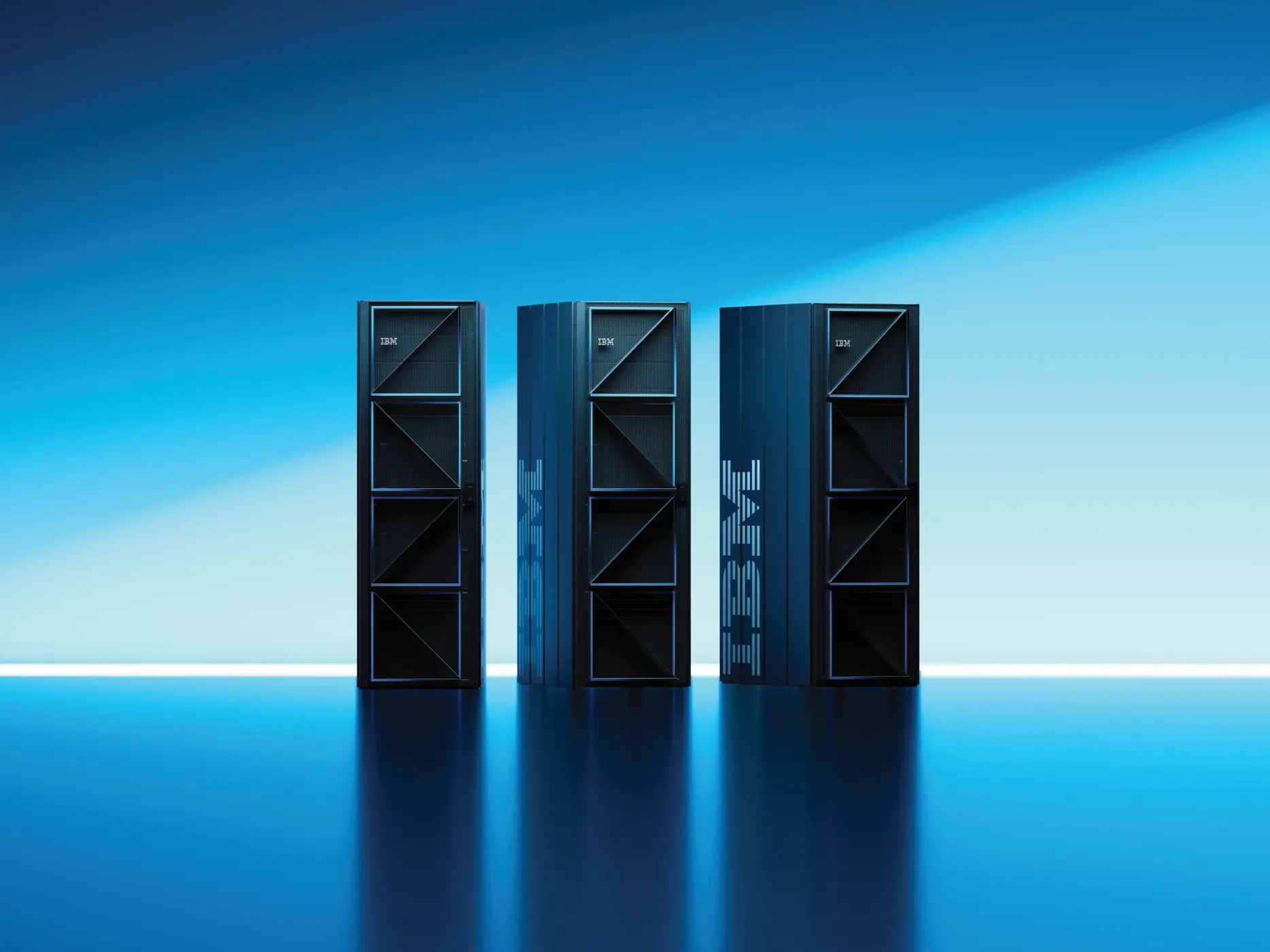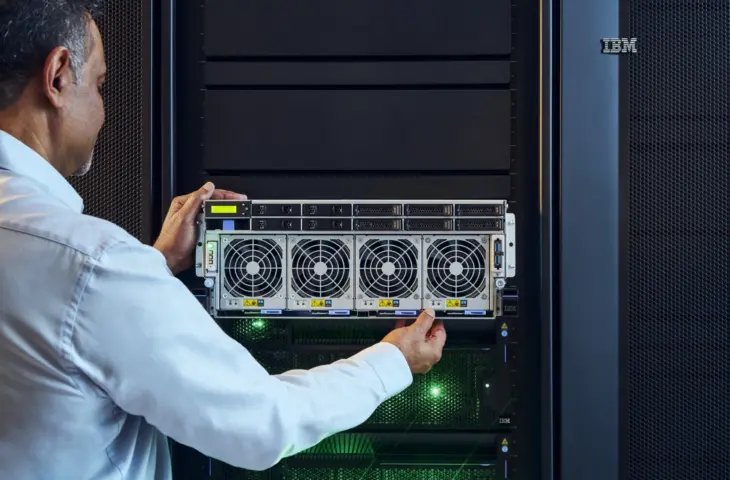Preserve the core, stimulate innovation: a slogan that encompasses the essence of IBM’s Power systems.
IBM has been charting its own course in the server world for decades, from mainframes such as the iconic IBM Z to midrange systems such as the AS/400 (now IBM i), and today’s brand-new generation on Power11. While the rest of the market focuses primarily on standard x86 servers and public cloud, IBM remains loyal to its own architectures for business-critical systems.
At first glance, this seems like a stubborn strategy, but perhaps it is the right choice. In an era where reliability, data sovereignty, and energy efficiency are more important than ever, Power11 proves that innovation is not always about building something new, but also about continuing to improve what works.
Cegeka, a loyal partner of IBM, already knows what to do with this unique strategy. We talk to Gregory Verlinden, Vice President Data and AI at Cegeka, and Gaetan Willems, Vice President Cloud and Digital Platforms, about the importance of a flexible IT architecture. They also explain how IBM’s Power systems, combined with an open-source approach, can be an interesting strategy in this regard.
Value proposition
The IBM Power servers date back to the late 1980s when the legendary AS400 was born. This product line was later renamed the IBM System i series as we know it today. “IBM’s Power systems are very performant and efficient,” says Willems. That is a promise they have been keeping for years.
read also
The secret behind the unique Power servers: a look under the hood
“Many companies today still have applications running within the IBM i operating system, but they too must be given room to maneuver within the context of data and AI,” says Verlinden. ‘Preserve the core, stimulate progress’, a well-known slogan that clearly encompasses the essence of IBM’s Power systems. “Companies must be able to maintain their existing infrastructure (the core), while creating space for innovation with data, AI, and modern applications,” Willems clarifies.
You can completely redevelop your entire infrastructure to make it ready for new technologies or opt for a different methodology. The latter is what IBM is aiming for with the new Power11 server.
Power11 server
The Power11 series is IBM’s latest generation of enterprise processors and servers based on them, aimed at organizations with critical infrastructure that require high availability, robustness, and AI integration.
The servers integrate IBM’s well-known Power architecture, but with some new features. Power11 chips have more cores and threads per core, support greater memory throughput, and hardware-based security. The servers also include built-in AI acceleration (via the Spyre-AI accelerator).


Where the competing x86 servers aim for general workloads and virtual environments, Power11 is optimized for continuous availability, heavy data processing, and hybrid-cloud integration. Want to dive deeper into IBM Power 11? Click here for more information.
Sovereignty
With this generation of Power systems, IBM aims to address one of the biggest concerns of European companies: what happens to my data and where do my AI applications run?
That seamlessly brings us to sovereignty, a topic that, according to Verlinden, is not new. “Europe has been working on sovereignty for years, but this concept had not yet found its way to the higher layers within companies. Now we notice that board members are more concerned about sovereignty.”
Willems adds that organizations are currently taking a wait-and-see attitude. “In the past, the public cloud was the norm, but now companies seem to be seeking more of a balance between public and private cloud.”
Data security
According to the gentlemen, this uncertainty and reluctance have to do with the arrival of AI and new technologies. “In the past, we were only concerned about who has access to our data. Today, we are putting an AI layer on our data platforms, and we have to worry about where that AI is running,” Verlinden explains. “Data security is one of the most important aspects that IBM addresses with Power11.”
Without trust and transparency, there is no adoption.
Gregory Verlinden, Vice President Data en AI bij Cegeka
Workloads in their place
Today, organizations have both legacy systems and new innovations, spread across different cloud environments. This creates complexity, skills shortages, and high costs. To regain control, AI and data platforms need to run in controlled environments.
A workload can run publicly or privately, but must also run on the best available infrastructure.
Gaetan Willems, Vice President Cloud and Digital Platforms
According to Cegeka, a hybrid solution offers a solution. The company states that your ‘workloads’ should run where they belong best, based on security, costs, and regulations.”
Open source
For some purposes, companies prefer the private cloud, for others the public cloud. “However, you cannot simply transfer things from the public cloud, such as Snowflake or Databricks, to the private cloud,” Verlinden explains.
Many of these commercial cloud products are open source, and consist of open-source components that are packaged together. This makes it possible for Cegeka to build its own data sources and AI frameworks, with limited dependence on large cloud vendors.
We decompose commercial solutions into their open-source components, so that they can also run in a private environment.
Gregory Verlinden, Vice President Data en AI bij Cegeka
Cegeka is strongly committed to open standards such as Kubernetes via OpenShift (IBM recently acquired RedHat), so that workloads are not tied to one vendor or cloud. “We looked at how commercial AI platforms are structured, and saw that we can rebuild that logic with open source, so that we can also run them locally,” says Verlinden.
Platform Engineering
The entire engine of that hybrid flexibility is Platform Engineering. Cegeka’s digital platform approach is based on a platform engineering concept and built to create one uniform layer on top of different infrastructures, such as Power11, x86, private and public cloud.
With Platform Engineering, we try to create order in the hybrid IT chaos.
Gregory Verlinden, Vice President Data en AI bij Cegeka
All these layers together form a composable platform. This means that customers can exchange technology components, move workloads, and apply policies across their entire infrastructure. “If a certain vendor has a supply problem tomorrow, we can simply use another engine without the entire system breaking down,” Verlinden explains.
Composable is an IT architecture built from interchangeable building blocks, in which hardware, software, and AI technology can be freely combined.
Gregory Verlinden, Vice President Data en AI bij Cegeka
Innovative but familiar
The advantage of a composable infrastructure is that not all eggs have to be in the same basket. Companies are thus more limited in a vendor lock-in and can seamlessly switch their building blocks between private and public cloud. Organizations can dynamically distribute their workloads across different platforms, from Power11 servers in their own data center to public cloud services.
In this way, new tools or AI technologies can be added without major migrations or reinvestments. For Cegeka and IBM, composable IT is the key to sovereign control and innovation: companies retain the reliability of their core systems, but can also respond quickly to changing market or compliance requirements.
IBM’s Power11 system is technologically more advanced than ever and is much more accessible today than it used to be. Moreover, the composable approach ensures that the platform remains manageable. For companies looking for a modern and flexible solution, Power11 may be the key.
